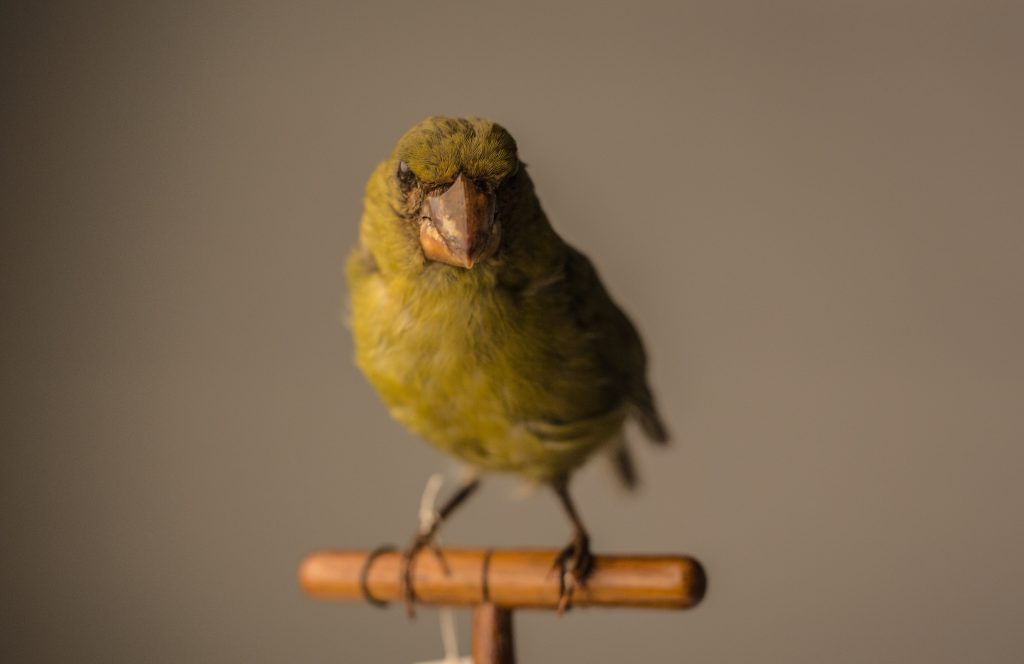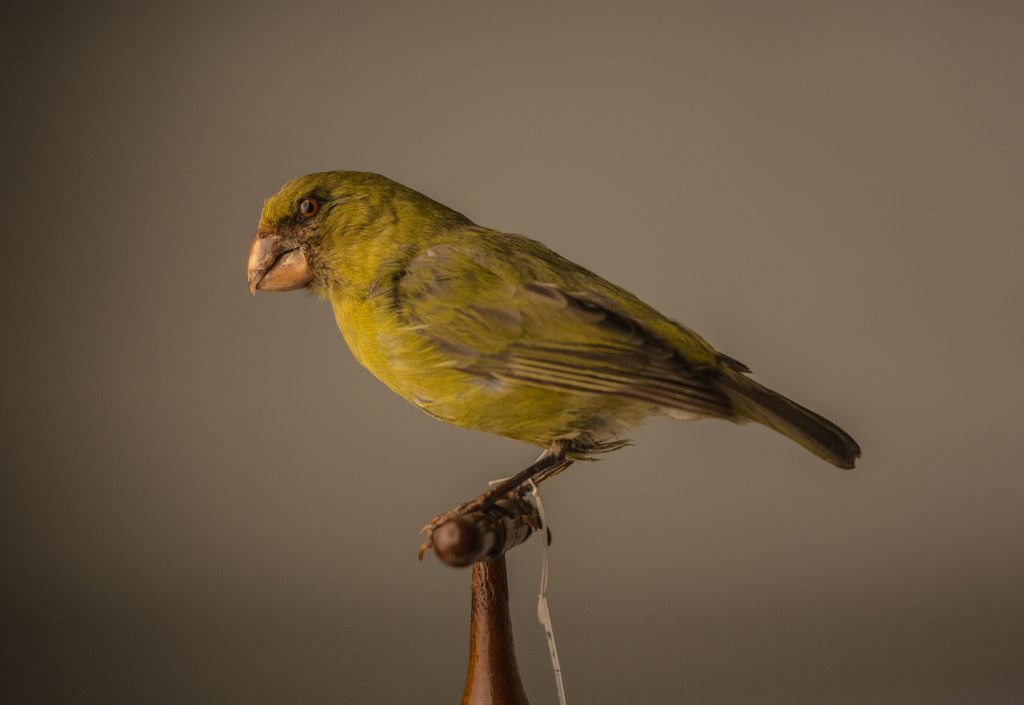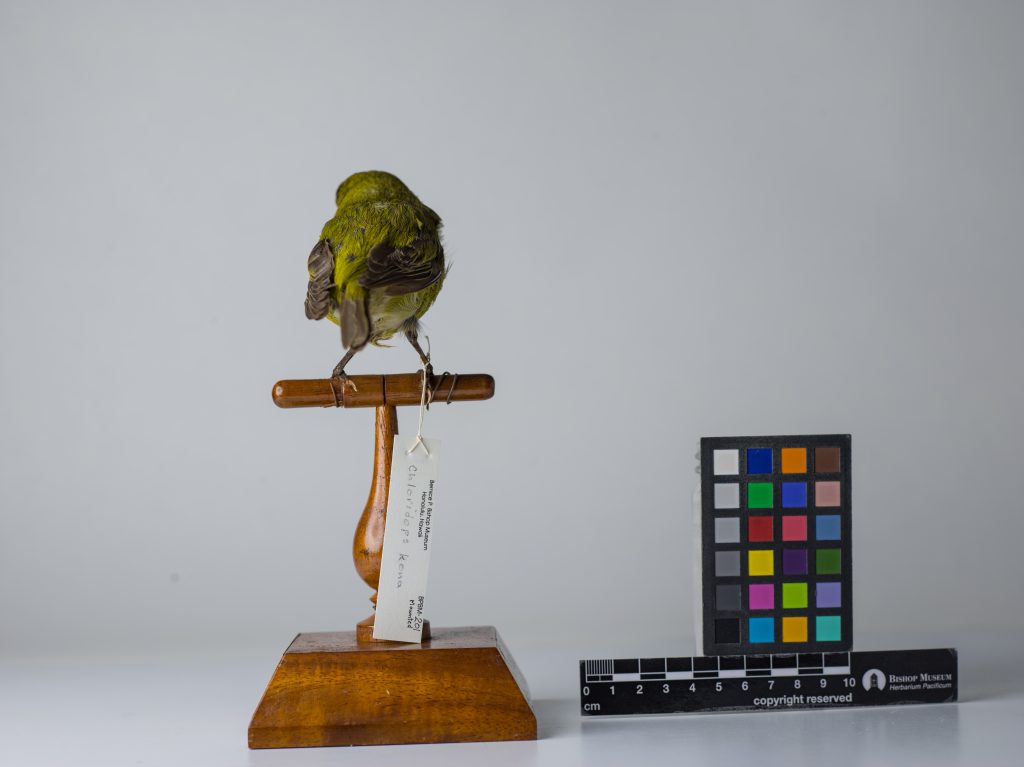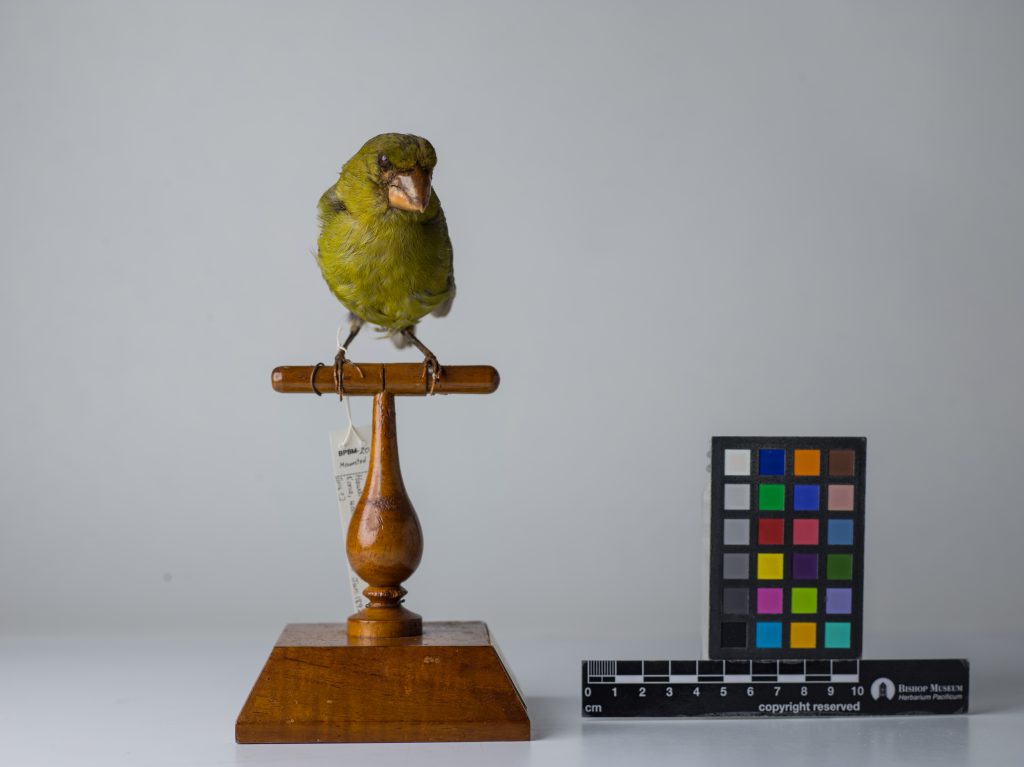Kona Grosbeak

Names
- Common Name: Kona Grosbeak
- Scientific: Chloridops kona
Song
No available recordings.
Conservation Status
Extinct. Last recorded sighting in 1892.
Species Information
The Kona grosbeak, lesser koa-finch and greater koa-finch are similar species due to their size, habitats, and brief documented history. The main differences between these honeycreepers are their beaks and colors. The Kona grosbeak was a medium-sized, olive-colored forest bird in the Chloridops genus. Kona grosbeak were unique to this family because of their large heads, muscular jaws, and strong beaks, adapted for breaking through and eating hard naio seeds (Olson 1999). Due to this adaptation and choice of food source, their stomachs are smaller than the lesser and greater koa-finches who primarily eat and store koa seeds (Olson 1999).
Distribution
Hawaiʻi Island
Habitat
In addition to the dry, middle elevation, mesic forests found in North Kona, Kona Grosbeak would have been found habituating recent ‘a’a lava, due to the prevalent sandalwood (Olson 1999). Records of this species come from Hualalai and Mauna Loa, near Puʻu Lehua Ranch and Kaʻohe Ranch (Pyle & Pyle 2017).
Threats
Due to their brief history, the cause of extinction is unclear. However, these birds consumed one specific type of food in a niche habitat, so the assumption is that as the terrain changes with an increase in human populations, the birds could not adapt. These changes include factors such as deforestation and introduced species (Grant 1995). The discovery and disappearance of this bird happened almost simultaneously with the Kona grosbeak and greater koa-finch (Olson 1999).
Photos
Additional Resources
Grant, P. R. 1995. In remembrance: Cliloridops kona, died ca. 1895. The Linnean, Newsletter and Proc. Linn. Soc. Lond, 11(13): 14-23
Olson, S. L. (1999). Kona Grosbeak (Chloridops kona), Greater Koa-finch (Rhodacanthis palmeri), Lesser Koa-finch (Rhodacanthis flaviceps). The birds of North America.




